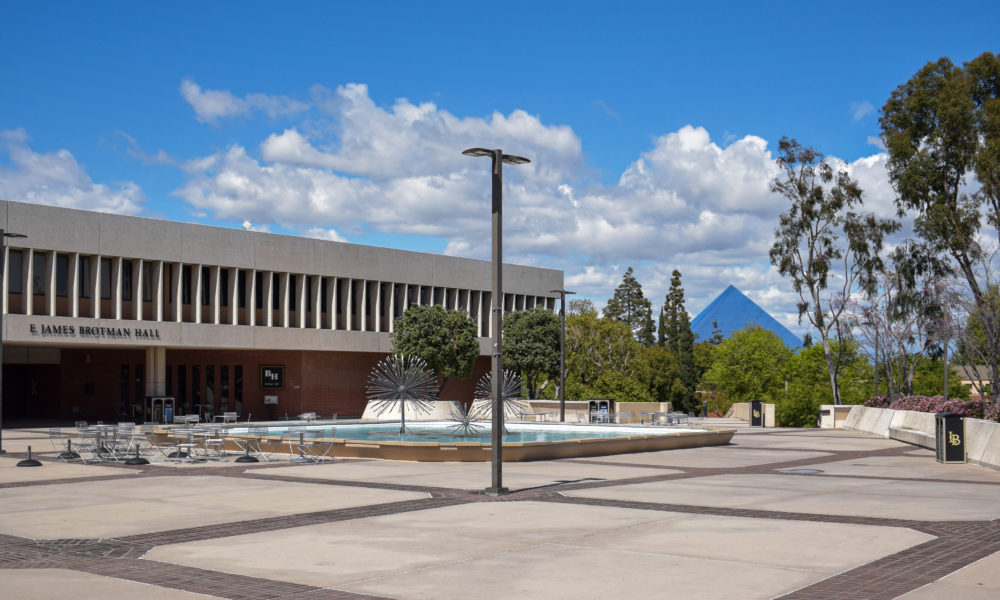Since the suspension of in-person classes and closure of some facilities at Long Beach State due to the COVID-19 pandemic, students have taken to social media to voice concerns about where their tuition and enrollment fees are going.
According to strategic communications associate vice president, Jeff Cook, and Associated Students Inc. communications director, James Ahumada, tuition and enrollment fees are still supporting instruction and facilities at CSULB.
“Revenue from tuition, fees, and our state allocation continues to support staffing costs and programmatic expenses associated with all instruction and student-support services,” Cook said.
Third-year finance major Matthew Reyes started a petition requesting partial tuition reimbursement from CSULB.
“We aren’t able to fully utilize these resources that we had intended for us to be using when we paid for our tuition,” Reyes said. “Where exactly is our money going?”
According to Reyes, students who signed the petition said that they did not sign up for online classes.
Despite some students’ misgivings about virtual learning, staff still need to be paid. According to Cook, this is one of the largest costs tuition and other revenue support, accounting for 77% of the $475 million general fund for the 2019-2020 academic year budget.
“While the global COVID-19 pandemic has changed the nature of the way in which classes are offered, students who successfully complete these classes will achieve important learning outcomes,” Cook said. “Staff, too, have been focused on delivering our many student services even in this unprecedented remote environment.”
Daniel Gallo, a fourth-year comparative literature major, signed the petition. Like Reyes, he said that one of the reasons he signed was due to the fact that he paid for resources he cannot utilize.
“I don’t know how all of this works but, for example, some of our tuition money goes towards the school gym and now it is closed,” Gallo said.
The Student Recreation and Wellness Center is maintained in part by the ASI enrollment fee students pay every semester. Since students can no longer use the facility due to COVID-19, students like Gallo questioned as to why there has been no fee reimbursement.
“While a portion of the ASI fees are intended to offer programs and services within a given fiscal year, a large portion of the fee is put towards operating and maintaining a non-profit business and our many facilities,” Ahumada said.
According to Ahumada, although the method of delivery has changed, the level of service has not.
SRWC instructors are now offering virtual workouts. Student staff like ASI Senators continue to meet virtually on Zoom.
Teachers at the Isabel Patterson Child Development Center are preparing daily and weekly educational videos for parents to use at home in lieu of in-person childcare. Beach Pride events, whose student staff organize activities like the on-campus farmers market, is now in the process of continuing events like Poet’s Lounge while creating new activities like pet show and tell.
“Funding our permanent staff and temporary student staff obligations, maintaining our buildings, and improving infrastructure all equate to set costs that do not, and have not changed much,” he said.
Currently, over 2,700 individuals signed Reyes’s petition.
As students continue to express their concerns about their tuition and enrollment fees, Cook said CSULB supports students during this difficult time.
“We are aware of the interest by some in pursuing a tuition refund, however, we encourage students to stay engaged, stay in their classes, and be patient as we continue to adapt to changing circumstances,” Cook said.
Staff writer Pavel Pilipenko contributed to this article.
This article previously contained incorrect information regarding the amount of money that is allocated for staff salaries. A correction was made on April 7 at 10:20 a.m.





Pingback: Our tuition is still working on campus; even if we aren’t - Daily Forty-Niner
I’m a proud Beach student in a 3-year, year-round doc program. We were informed last week that our entire summer session, May – August, will be delivered via alternative instruction as the campus will remain, for the most part, closed for precautionary measures. Which is understandable. But when I registered for my summer courses this past Tuesday, two fees raised concern. A $150.00 USU/SRWC fee and a $45 Student Health Services fee. My understanding is that there is no plan to re-open either facility over the summer or reduce these fees to reflect a drastic reduction in access/services to students. If this is the case, and in my opinion, the powers that be (CSULB and ASI) should be leaning on their financial reserves and offering students a fair fee rate for virtual services offered. Or at least communicate their thoughts/strategy to the student body and engage us in a spirit of transparency. I for one would be willing to voluntarily pay full fee for reduced services to do my part. But I don’t like the idea of being forced to in this instance. Stay safe everyone. Go Beach and Give Love!
So what happened to the $1 Billion dollar surplus that the CSU stashed for emergency funds? I think this is exactly the situation that they claimed to have made it for. Yet, they are still having reservations about paying back tuition when students are not getting what they paid for.